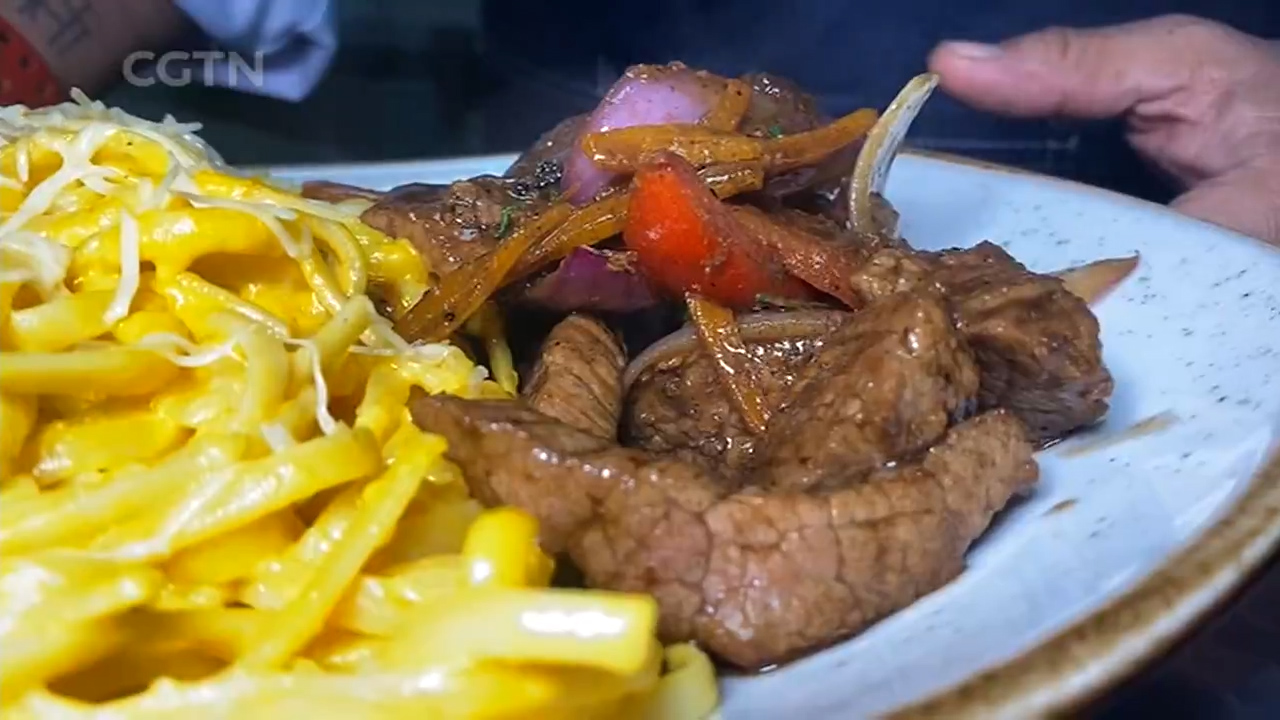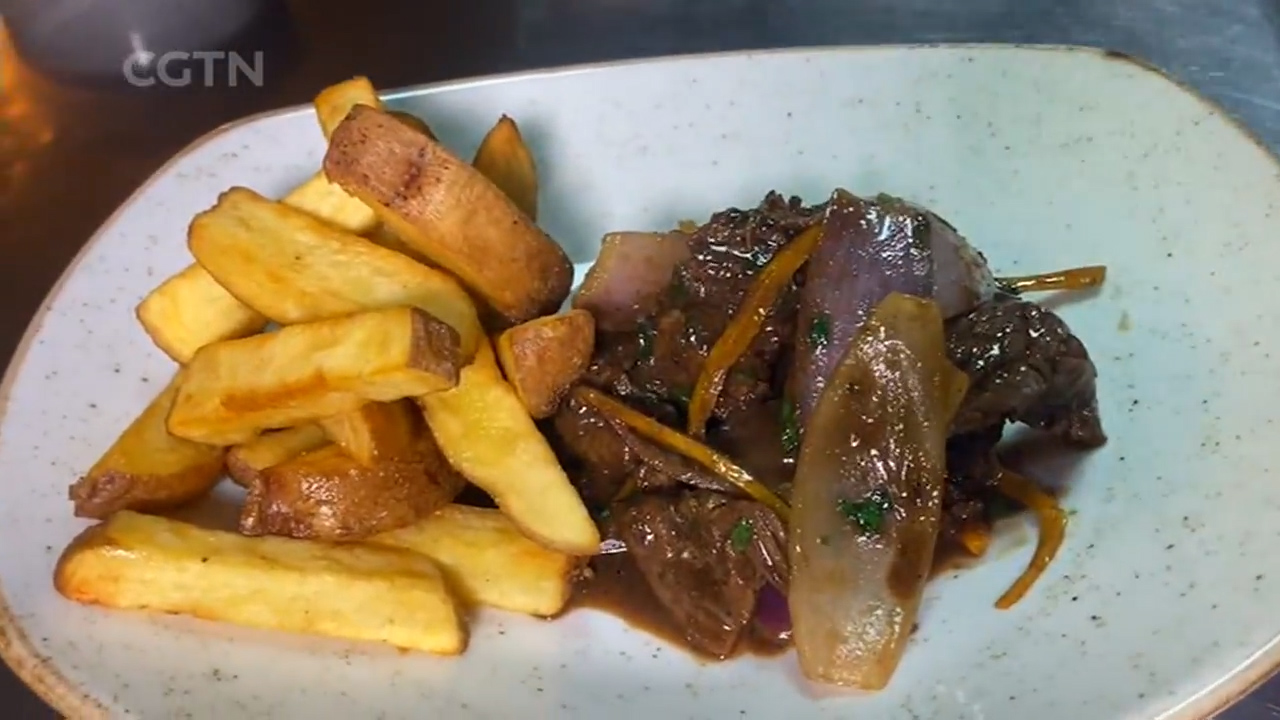04:14

Peruvian food is increasingly being recognized as one of the world’s greatest cuisines. That is largely thanks to its stunning array of ingredients drawn from diverse locations like the Andes, the Amazon, and countries along the Pacific.
However, its magnetic appeal also stems from the diverse cultural and culinary influences provided by waves of immigrants, including Chinese laborers who went there in the late 19th and early 20th centuries. That led to a unique gastronomic fusion.
Today, one of Peru’s best-known and most-loved recipes, lomo saltado recipe, or beef stir fried with rice, is cooked in a wok and flavored with soy sauce and Peruvian yellow chili peppers.
Chef Raul Aranibaris is a professional at flambeeing beef. Demonstrating the cooking of this dish to the camera, he adds the yellow chili pepper and a little onion, and then he turns up the heat and does the last flambé.
Few recipes tell the tale of the country’s history the way Peru’s lomo saltado recipe does. Stir-fried strips of sirloin are cooked in a wok with slices of tomatoes and red onions, and then heavily seasoned with cumin – a spice originally brought over by the Spanish conquistadors, a yellow chili pepper found only in Peru, and some soy sauce, first imported to the Andean nation by Chinese laborers a century ago.
Aranibaris is the chef and owner of Huascar Restaurants. He says the dish involves many elements, with Peruvians adopting it as part of their identity. “It is a fusion of ingredients, and therefore flavors; that makes it a super complex dish,” he said.
Most countries have Chinese restaurants. But not Peru. Here, they are called “chifas” and offer a unique version of Peruvian-Cantonese fusion food, reflecting the origins of the Chinese immigrants who came here to work agricultural jobs on the Pacific coast.
Now is not just one of the top dishes at any chifa restaurant, but is an essential item on the menu of any Peruvian restaurant.
Alexander Huerta Mercado is an anthropologist at the Pontifical Catholic University of Peru. He believes that Chinese food has elements of color, taste, and even sound when you eat it, which match perfectly with Peruvian culture.

The lomo saltado can be served in different ways: with white rice and fries on the side or even noodles. /CGTN
The lomo saltado can be served in different ways: with white rice and fries on the side or even noodles. /CGTN
This is the classic way to serve lomo saltado, with white rice and fries on the side. But there is a big debate in Peru. Some prefer the fries, made with Peruvian yellow potatoes, a flowery, highly-absorbent variety, to be mixed in with the beef and sauce at the last minute, to soak up the juices.
But there are other ways to serve lomo saltado. Perhaps the best-known one is with a tacu tacu. This is an Afro-Peruvian dish that is made up of rice and pulses blended together and then fried with a smattering of pork lard. It can accompany many dishes in Peru, but lomo saltado is perhaps the most popular.
One of the wonderful things about lomo saltado is that it is actually really easy to cook. The only ingredient that is hard to find outside of Peru is the yellow chili pepper. You can experiment with other, milder chilis. But to truly experience how Cantonese fusion food has come to shape and even define Peru’s culinary scene, you probably have to visit Peru.



